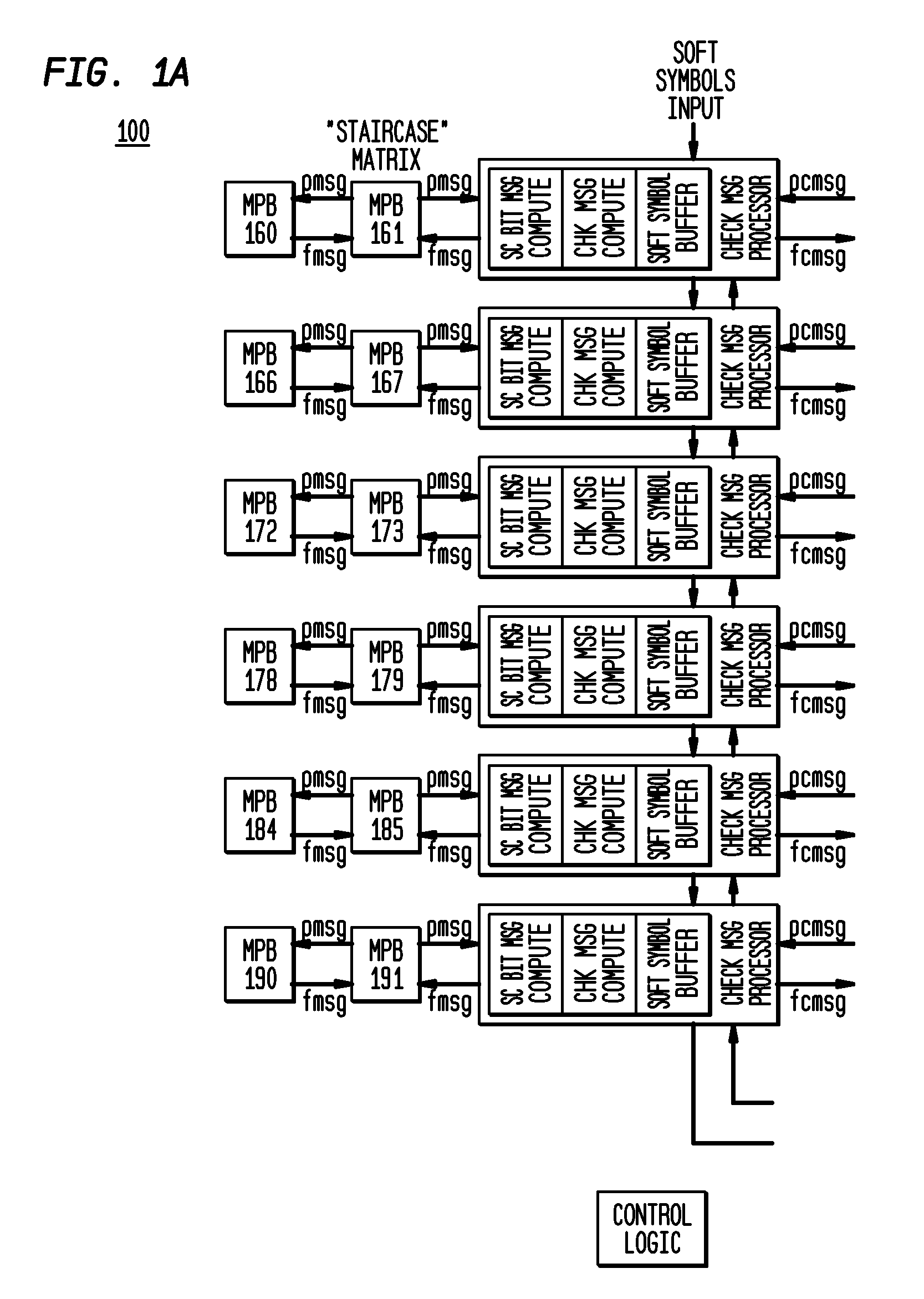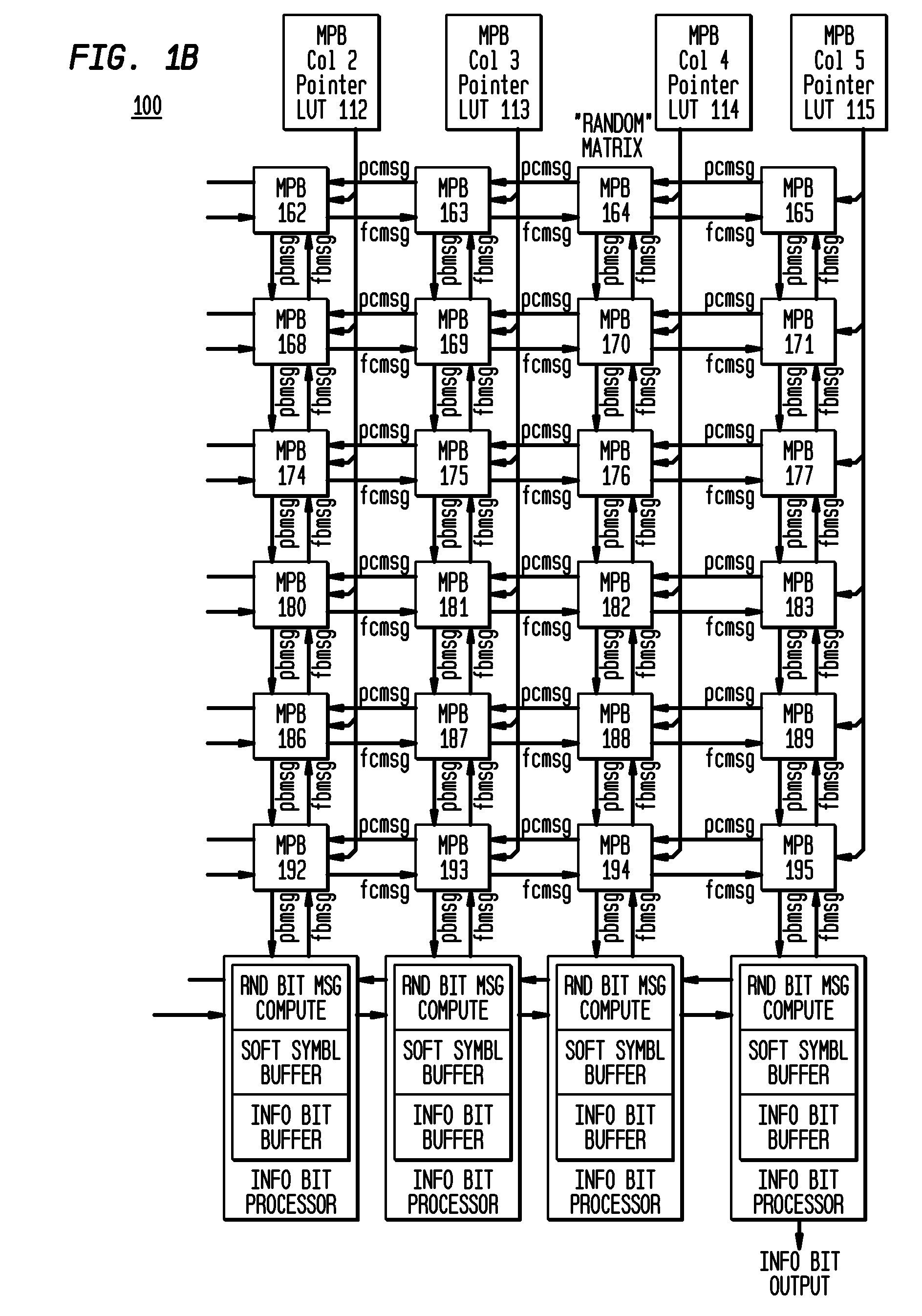Efficient, programmable and scalable low density parity check decoder
a low density parity check and decoder technology, applied in the field of forward error correction codes in communication systems, can solve the problems of actual data throughput below the shannon limit, bit corruption during transmission, and special problems, so as to facilitate mapping to mpb, minimize processing cycles, and minimize overhead. the effect of correction data sent along the transmission channel
- Summary
- Abstract
- Description
- Claims
- Application Information
AI Technical Summary
Benefits of technology
Problems solved by technology
Method used
Image
Examples
Embodiment Construction
[0025]In exemplary embodiments of the present invention, methods and apparatus allowing for an efficient design of an LDPC decoder suitable for a range of code-block sizes and bit-rates, which is also suitable for both ASIC as well as FPGA implementations, are provided. In exemplary embodiments of the present invention, the overhead associated with correction data sent along the transmission channel can be minimized.
[0026]FIG. 1 depicts a schematic representation of an exemplary, optimized LDPC decoder according to an exemplary embodiment of the present invention, represented generally as 100. FIG. 2 depicts another LDPC decoder according to an exemplary embodiment of the present invention, represented generally as 200. The main distinction between decoders 100 and 200 is that whereas 200 is a more general implementation that can work with a non-eIRA parity-check matrix, 100 is an optimized implementation which can take advantage of the properties of an eIRA parity-check matrix. The...
PUM
 Login to View More
Login to View More Abstract
Description
Claims
Application Information
 Login to View More
Login to View More - R&D
- Intellectual Property
- Life Sciences
- Materials
- Tech Scout
- Unparalleled Data Quality
- Higher Quality Content
- 60% Fewer Hallucinations
Browse by: Latest US Patents, China's latest patents, Technical Efficacy Thesaurus, Application Domain, Technology Topic, Popular Technical Reports.
© 2025 PatSnap. All rights reserved.Legal|Privacy policy|Modern Slavery Act Transparency Statement|Sitemap|About US| Contact US: help@patsnap.com



